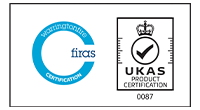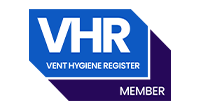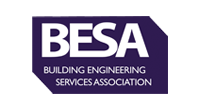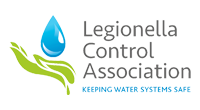Water Resource Management – Reducing Cost for Businesses
When it comes to Water Resource Management, who likes surprises? I can honestly say that I am not a big fan of surprises when it comes to business, especially when it involves unbudgeted spend. And the surprising long term costs that ineffective water resource management can incur is no different.
Generally speaking, water is or should be readily available in a commercial environment (where there is water demand there should be water supply). This universal solvent is cheap (ish) and has multiple uses for organisations: cooling, heating, steam generation, process applications, on domestic systems, and many more. It is natural – which means that it often comes in its raw state.
So far, we have a perceived commodity that is there when we need it (that water scarcity doesn’t exist). So why would we need a management programme for it? Let’s look at some key drivers: the law, the right thing, and the budget.
The Law
If everything was clearly legislated, it would be simple – we do it because we must. However, within our industry, while we do have some legislation, there is a lot more that goes under guidance – which leads to interpretation and opinion. Opinion on its own can be dangerous. Because that means you can tell yourself you can do nothing.
The Right Thing
There is no doubt that more than ever, businesses have sustainability at the heart of what they do. Customers demand it, organisations depend on it and the planet deserves it. Integrated Water Resource Management planning should be a cog in the successful set up of a business.
The Budget
The thing about budget is that it is there to be used. Doing nothing is not saving money. So then how to make the most effective use of this spend?
So, in effect, water resource management is a combination of obeying the law, doing the right thing, effective use of budget and of course not forgetting… no surprises.
The Cost of Water Resource Management
Water will generally give three challenges if not effectively managed: bacteria growth (including legionella, pseudomonads), deposition (including scale formation) and corrosion. Imagine you make widgets – you make money by making widgets – the more widgets you produce, the happier the boss is – who doesn’t love happy boss? You don’t want to upset your boss by asking for money on servicing plant, or cleaning equipment – time is money – get those widgets out the door. Kerching!
You use that plentiful water – it drives the steam that helps you make your widgets. You stopped spending money on chemicals that treated the boiler and stopped adding salt in the softening plant. The boss is happy – you have reduced costs by doing less maintenance and cutting back on chemicals. Cost per unit widget produced is going down… Well, until your systems fail due to a lack of maintenance and it becomes clear that planned spend usually is less costly than reactive costs (surprise!).
The previously happy boss will soon forget the money saved on skipping planned maintenance when the system is down unexpectedly, and those widgets no longer are going out the door. After all – who likes surprises?
It is important, therefore, that we understand cost – including the cost of failure, loss of reputation, legal charges and damage to the planet. So how do we drive cost reduction without increasing risk?
The good news is – there is a strong network of professionals who can advise and make it clear that we know what to do. The bad news? In the short term, there can be a perceived ‘saving’ by simply doing nothing or reducing planned maintenance spend.
Ways to Reduce Cost in Water Systems
Choose a Trusted Advisor
Previously we looked at the Top 5 things to consider when choosing a water treatment supplier. Let’s, therefore, assume you have carefully vetted and chosen your ‘Trusted Advisor.’
Have a well-trained Duty Holder
Your site will have appointed a Legionella Responsible Person who is trained and has procured a legionella risk assessment (with Duty Holder support) – the Trusted Advisor will clearly support to help procure these as well as advise you on how to produce the written scheme of control. This generates a list of actions, a list that should also be ranked by ‘Highest to lowest risk.’
Have the right procedure in place
So we should have ‘’what to do’.
The ongoing scheme will determine ‘who does what’ and ‘what to do in the event of out-of-specification’.
Should be fairly straightforward to manage from here.
But what of process systems where there are no legislative drivers – can we rely only on ‘doing the right thing’? – not always… if I can offer an answer.
Being wise with your Water Resource Management
There is no doubt that water treatment is expensive – but with the purchase comes specialist advice from your Trusted Advisor. Paying for this advice and then not taking it – is that effective use of company budget?
Let me suggest an alternative way – this is based upon 20 years’ experience of learning together with customers who are my business partners. Where there are legal drivers, we complete works as an absolute minimum. No argument and they expect me to be direct and pull no punches.
Where it is right to use greener and more effective solutions we innovate and where we can, we lead with these solutions. These solutions require integrated approaches, and the old adage of quantity and quality (managing water quality in this case) applies here, to an extent.
If we take the increasing demand in third world countries for global water as an example, it’s vital to have an approach to water (in their case fresh water/drinking water) that is a primary human right and should be treated with great respect.
















